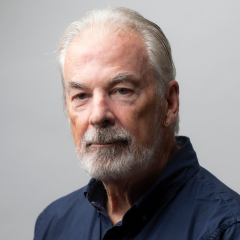Researchers from The University of Queensland’s Science of Learning Research Centre (SLRC) have taken to the classroom to find out the best way to teach by experimenting on the students themselves.
Backed by three state governments, eight universities, and the Australian Council for Educational Research (ACER), the SLRC is a special research initiative of the Australian Research Council that examines how kids learn and what makes them pay attention.
UQ will host a workshop next week as part of this nationwide project. Bringing the Science of Learning to the Classroom will take place at St Lucia Campus on 27-28 June 2016.
This two-day professional development program for school educators will draw together current research across the fields of neuroscience, cognitive psychology and education, and translate it into relevant, future focused, practical information for teachers.
Participants will have the opportunity to engage with a range of learning principles derived from the fields, and collaboratively consider the applications of these to educational practice.
Professor Robyn Gillies from UQ’s School of Education is involved in the project, using wristbands on students to track heart rate and skin conductance which measure an index of physiological arousal.
“The wristbands and small white boxes monitor synchronised movements while cameras watch the students' every move in an attempt to work out what gets them excited,” Dr Gillies said.
“We can also pick up on speech events such as how often they participate, the volume, and the tone of what they're saying – all of which provide us with additional insights into how the students are embracing the learning that they're experiencing,” she said.
Another part of the research takes place in UQ’s School of Psychology, where students are fitted with special caps injected with gel to measure their brainwaves.
Professor Jason Mattingley, UQ’s Foundation Chair in Cognitive Neuroscience, said this technology allows them to record moment to moment activity in people’s brains, and work out when it is in the optimal state to encode a new piece of information.
“The students are given a quiz while researchers observe what's happening inside their brain. In fact, we can show that individuals' brain responses nicely predict whether they're likely to get that problem correct or incorrect just three or four seconds later in time,” Professor Mattingley said.
Findings suggest that age is a big component; younger kids' attention spans are much shorter and tend to wane more quickly.
“Older kids have better self-control over their attention, but it can depend on things like the time of day,” he said.
Professor Mattingley said the brain recordings can show quite reliable differences in terms of time of day and levels of attention.
Bringing the Science of Learning to the Classroom is being held Monday and Tuesday, 27 and 28 June 2016 from 9am – 5pm at St Leo’s College, The University of Queensland. Register now.
Media: Professor Robyn Gillies, 07 3365 6541, r.gillies@uq.edu.au or Professor Jason Mattingley,j.mattingley@uq.edu.au 07 3346 6331



